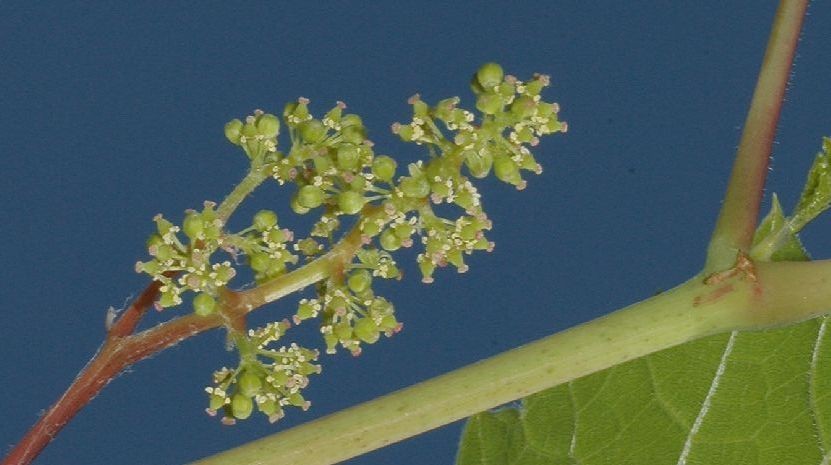Riverbank grape
(Cissus repanda)

Description
Vitis riparia Michx, with common names riverbank grape or frost grape, is a vine indigenous to North America. As a climbing or trailing vine, it is widely distributed across central and eastern Canada and the central and northeastern parts of the United States, from Quebec to Texas, and eastern Montana to Nova Scotia. There are reports of isolated populations in the northwestern USA, but these are probably naturalized. It is long-lived and capable of reaching into the upper canopy of the tallest trees. It produces dark fruit that are appealing to both birds and people, and has been used extensively in commercial viticulture as grafted rootstock and in hybrid grape breeding programs. Riverbank grape is a translation of the scientific name Vitis riparia; rīpārius means "of riverbanks" in Latin, deriving from rīpa "riverbank". Mature vines have loose, fissured bark, and may attain several inches in diameter. Leaves are alternate, often with opposite tendrils or inflorescences, coarsely toothed, 5–25 cm (2.0–9.8 in) long and 5–20 cm (2.0–7.9 in) broad, sometimes with sparse hairs on the underside of veins. V. riparia is functionally dioecious. The inflorescence is a panicle 4–15 cm (1.6–5.9 in) long and loose, and the flowers are small, fragrant, and white or greenish in color. V. riparia blooms sometime between April and June and in August or September produces a small 6–15 mm (0.24–0.59 in) blue-black berry (grape) with a bloom, seeded, juicy, edible, vinous in flavor, lacking the "foxy" characteristics of Vitis labrusca, but usually quite sour and herbaceous. V. riparia has a wide range and may deviate considerably in detail from the above general description. White berries, perfect flowers, large clusters, large berries, and sweet fruit are among the known variations. However, some observers consider such variations as evidence of natural hybridization with other species of grapes. Vitis riparia has the largest geographical range of any of the North American Vitis species. It is present across nearly the entire eastern half of North America, from southern Quebec, to Piedmont, Alabama, and the Carolinas but absent of the coastal plains and the westerner parts of North America of the great plains. Variants of the species have been observed as far north as Riding Mountain National Park in Manitoba, Canada and as far west as Montana, Nebraska, and North Dakota.
Taxonomic tree:







